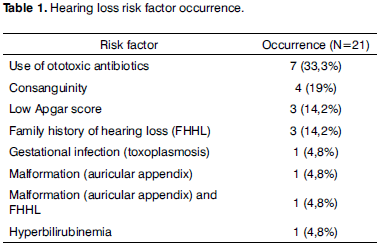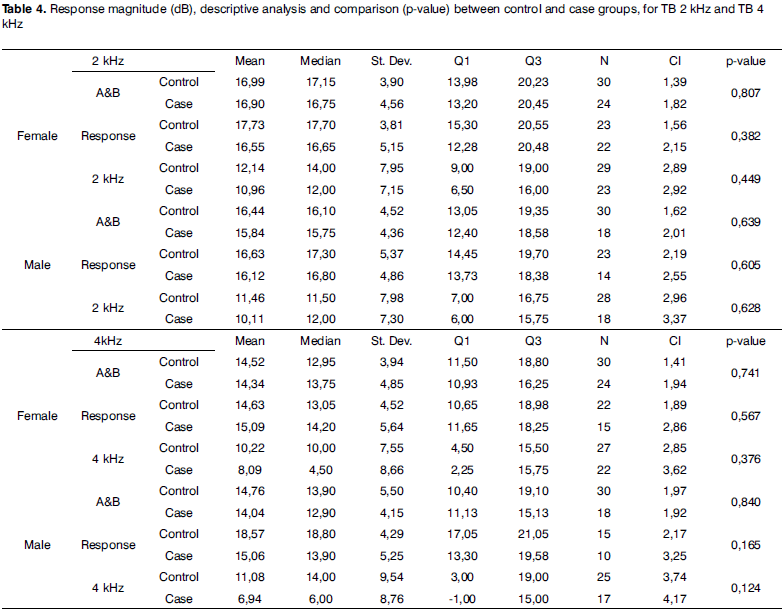A potential research project in otoacoustic emissions is the use tone bursts - frequency-specific stimulus. AIM:to study otoacoustic emission responses evoked by tone bursts in neonates with hearing loss risk factors. MATERIALS AND METHODS: 21 neonates with risk factors for hearing loss (study group) and 30 neonates without these risk factors (control group) were evaluated by otoacoustic emissions at the frequency range of 2,000 and 4,000 hertz. STUDY: Clinical and experimental. RESULTS: There was a right ear advantage in female individuals and in the control group, although without statistical significance. Mean "Response" values at 2,000 hertz were 17.73 dB in the control group and 16.55 dB in the study group for female subjects; and 16.63 dB in the control group and 16.12 dB in the study group for male subjects. At 4,000 hertz, the values were 14.63 dB in the control group and 15.09 dB in the study group for female subjects; and 18.57 dB in the control group and 15.06 dB in the study group for male subjects. CONCLUSION: Tone bursts may help evaluate cochlear function in neonates.
spontaneous otoacoustic emissions; neonate; hearing tests; neonatal screening





